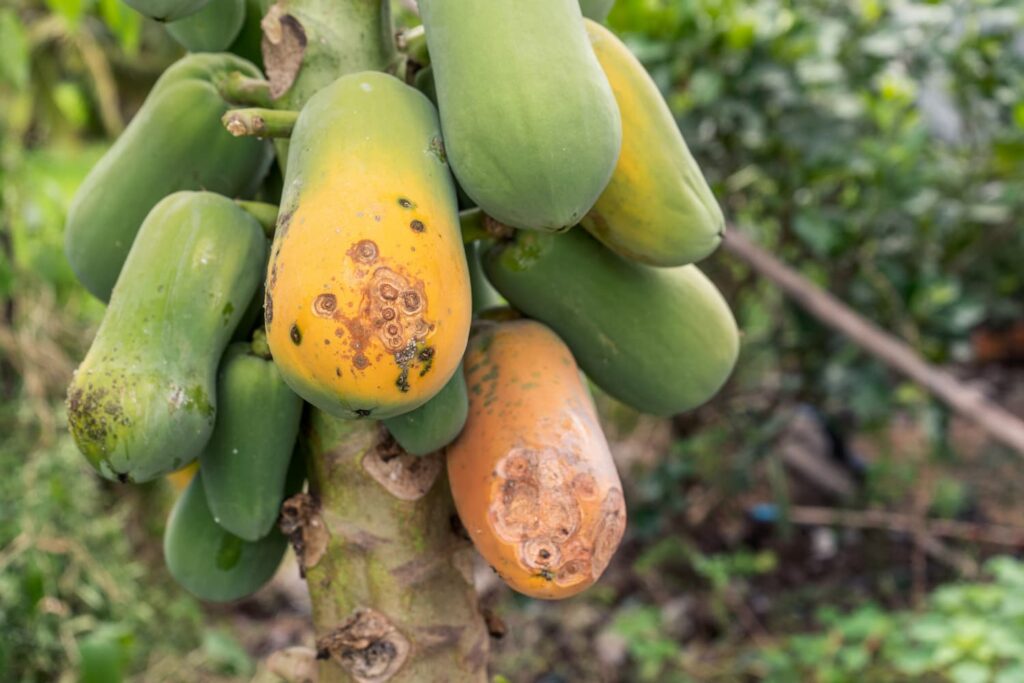What is Anthracnose?
Anthracnose is a type of fungal disease that affects trees and shrubs. It is caused by a group of fungi known as Colletotrichum, which can infect a wide range of plant species, including maple, oak, elm, ash, sycamore, and dogwood. The disease is characterized by the appearance of dark, sunken lesions on the bark, leaves, and fruit of infected plants. It can lead to premature leaf drop, defoliation, and even death in severe cases.
How Does It Spread?
The fungus that causes anthracnose is present in soil and can be spread through wind, water, and other methods. It is especially prevalent in areas with high humidity and frequent rainfall, as the moist conditions provide an ideal environment for the fungus to thrive. The disease can also be spread by infected plant debris, pruning tools, and even birds and insects that feed on infected plants.
Common Anthracnose Symptoms
Symptoms of anthracnose can vary depending on the plant species and the stage of the disease. The most common symptoms on trees include dark, sunken lesions on the bark and twigs, premature leaf drop, and dark, spore-filled lesions on the leaves. A yellow halo may surround the lesions, and the leaves may appear wilted or distorted.
- Dark, sunken lesions on the bark and twigs
- Premature leaf drop
- Dark, spore-filled lesions on the leaves
- A yellow halo might surround the lesions
- Leaves appear wilted or distorted.
Fruit trees infected with anthracnose may develop dark, sunken lesions on the fruit, which can lead to premature fruit drop. In some cases, the fruit may be deformed or stunted.

Prevention and Treatment
There are several methods for managing and controlling anthracnose in trees and shrubs. The most effective method is to prevent the disease from occurring in the first place by practicing good cultural practices, such as proper watering and fertilization, and by avoiding overcrowding and pruning during the moist, humid conditions that favor the fungus.
Method One (1):
If anthracnose does occur, it can be treated with the use of fungicides. These chemicals can be applied as a preventive measure or as a treatment for infected plants. It is important to follow the manufacturer’s instructions carefully when applying fungicides, as overuse or improper application can cause harm to the tree or the environment.
Method Two (2):
Another effective method for controlling anthracnose is to remove and destroy infected plant material. This can help to prevent the spread of the disease to healthy plants. It is also important to sterilize pruning tools after use to prevent the spread of the fungus.
In addition to these measures, it is important to choose tree and shrub species that are resistant to anthracnose when planting. Some examples of tree species that are resistant to the disease include oak, hickory, and beech.
Conclusion
Overall, anthracnose can be a serious threat to trees and shrubs. Still, it can be managed and controlled through the use of good cultural practices, appropriate chemical treatment, and the selection of resistant plant species. By following these steps, it is possible to protect your trees and shrubs from this destructive disease. Are you looking for another Tree Disease?
Want To Talk To A Certified Arborist?
Do you have more questions about your oak tree? Do you have oak wilt on the trees on your property? Do you have Tree Disease on your property in Texas? Call us today at (817) 799-7808 to talk to our Tree Care Experts.
North Texas Tree Care
As a North Texas-based tree care company, Oakwilt.org does more than just provide industry-leading tree care, we’re here to serve our beloved community. By giving our North Texas trees proper care and maintenance through routine tree check-ups and treating them for oak wilt when necessary, we can promote a greener, more sustainable North Texas community. For help with tree disease treatment and tree nutrition, tree care and tree insect management, soil conditioning, and more, contact our ISA Certified Arborists to get started.
Oakwilt.org is a full-service sustainable tree care company offering residential and commercial tree services in Dallas, Waco, Austin, Fort Worth, San Marcos, San Antonio, DFW, and more. Contact our North Texas tree care experts at (817) 799-7808 and enjoy 5-star rated tree care customer service and the best tree health services in North Texas!
To learn more about North Texas Tree Diseases: Actinopelte Leaf Spot, Anthracnose, Bacterial Leaf Scorch, Crown Gall, Dutch Elm Disease, Hypoxylon Canker, Oak Leaf Blister, Oak Wilt, Rapid Oak Decline, Sudden Oak Death, call our North Texas team of Arborist
at (817) 799-7808 or fill out the contact form.
We’re a little different than the average tree care company.
Learn more about Oakwilt.org ISA Certified Arborists!
Our North Texas-based tree doctors can explain how sustainable tree care services add more value to your properties.
Find out more today by giving us a call today.
